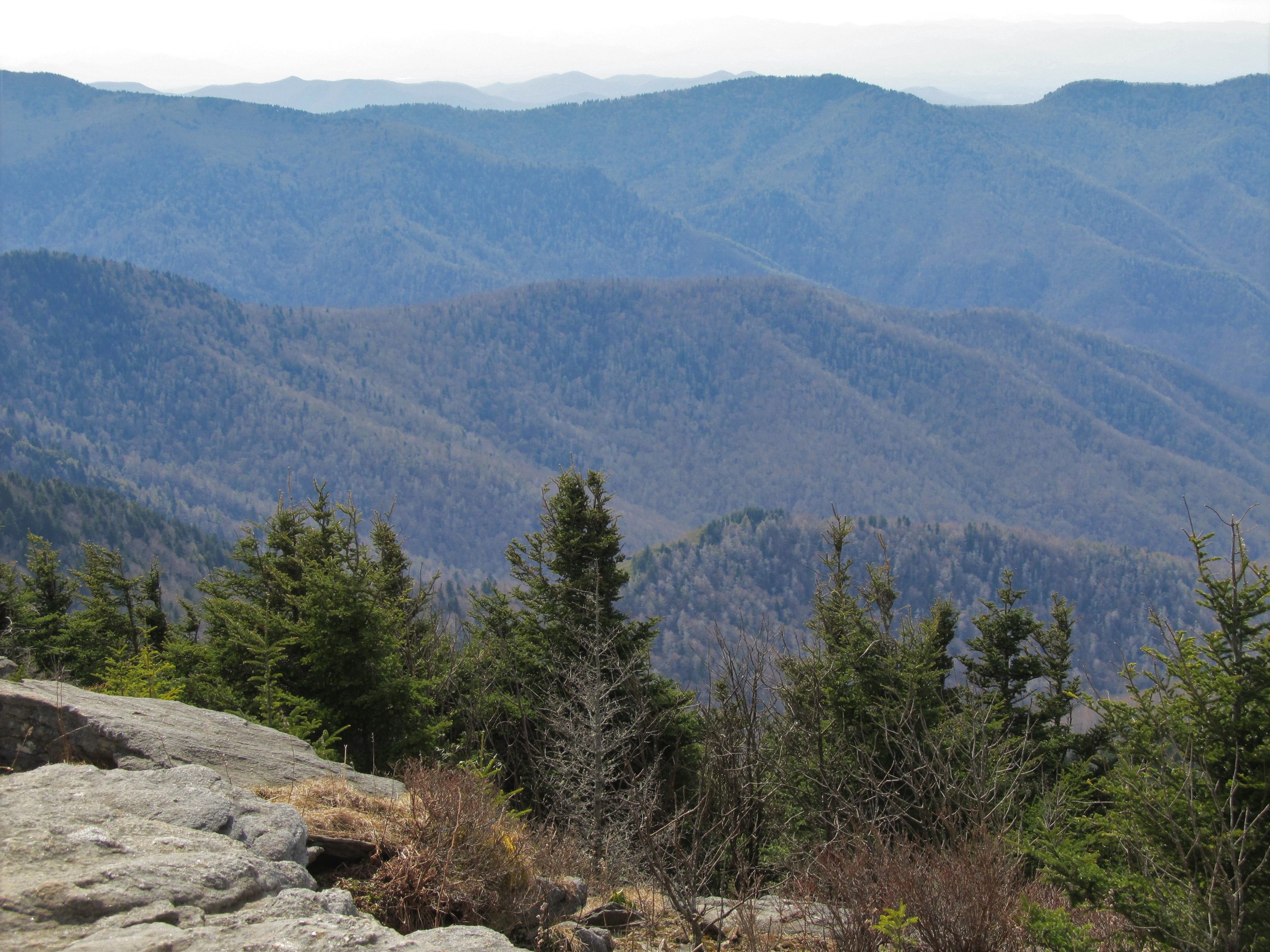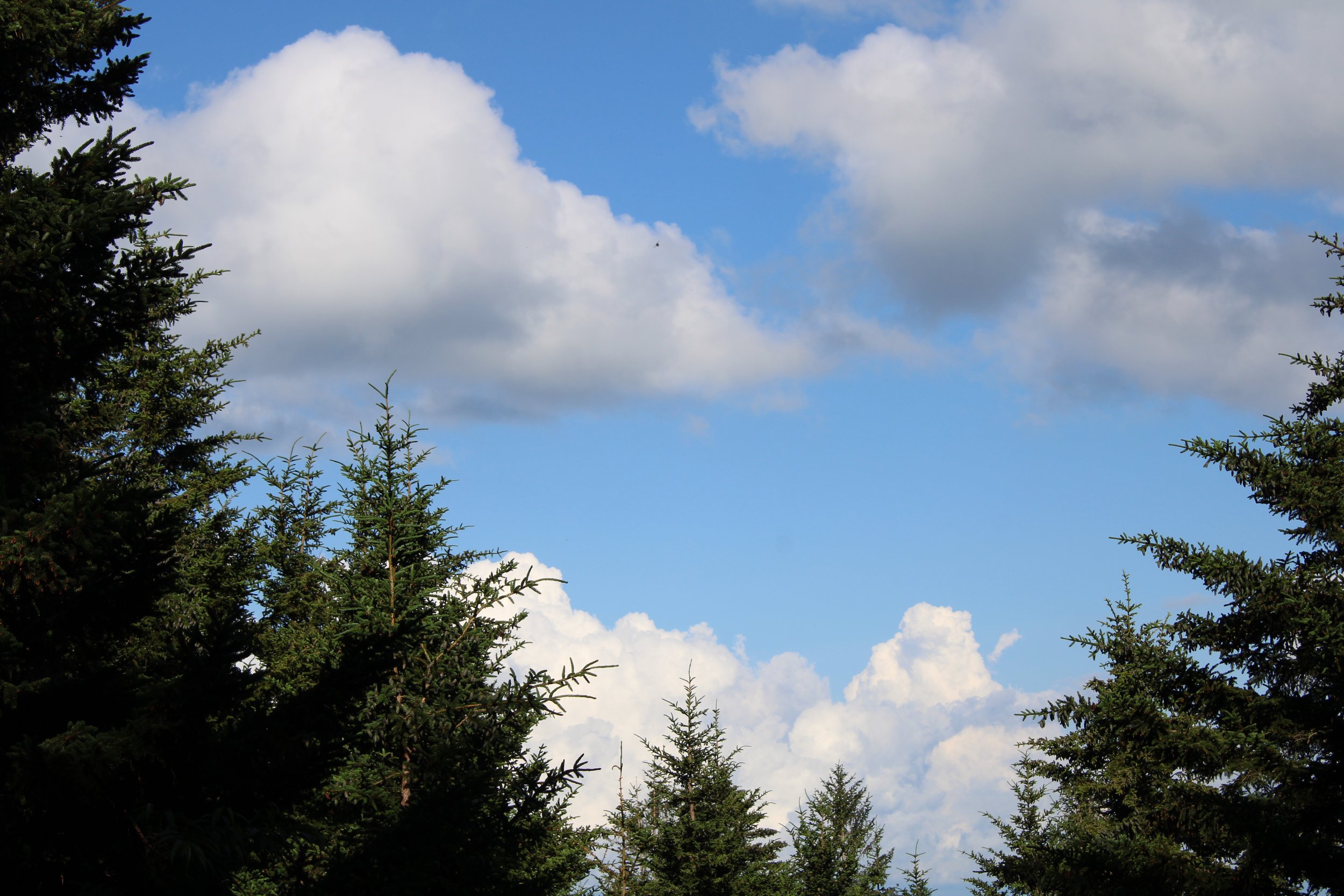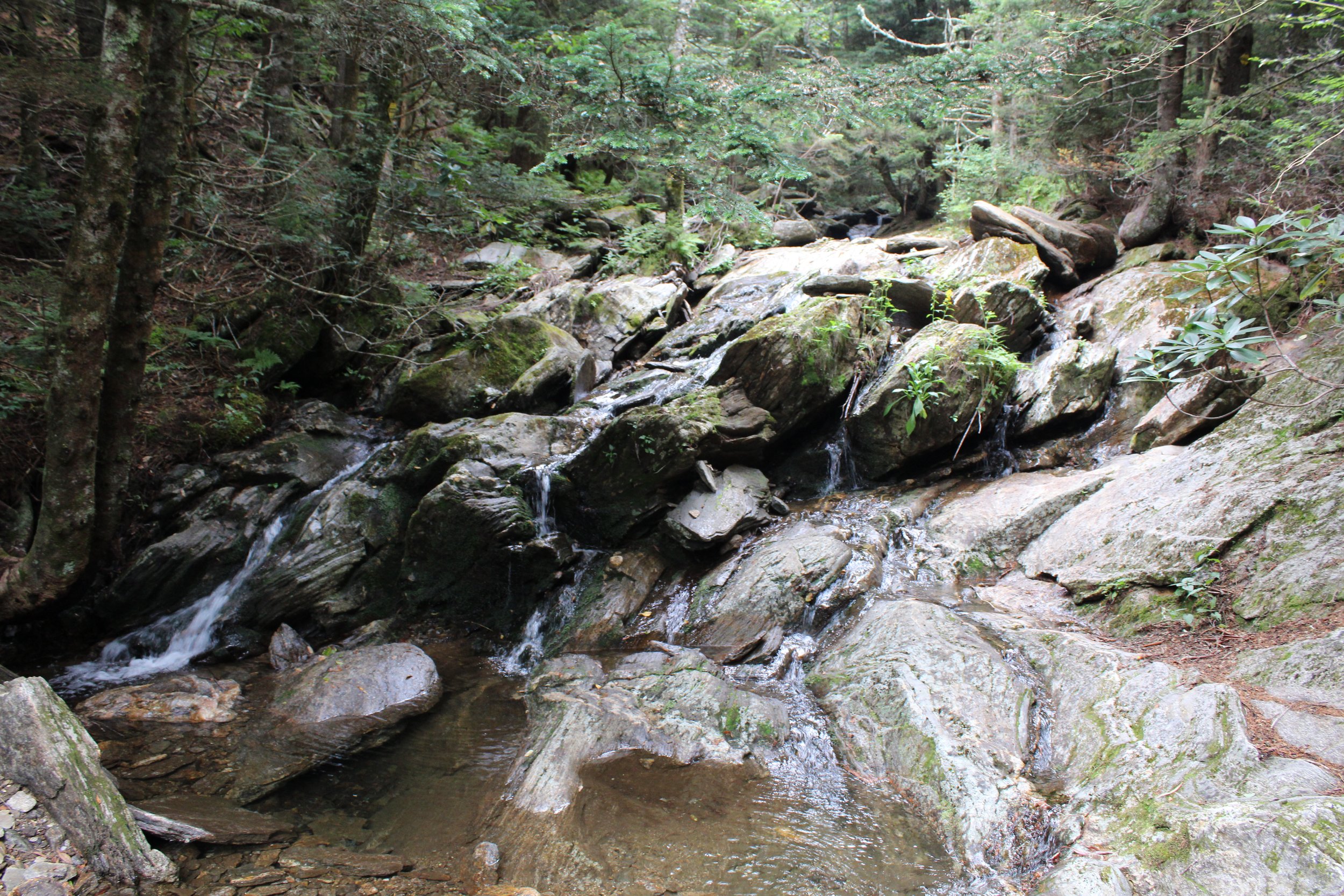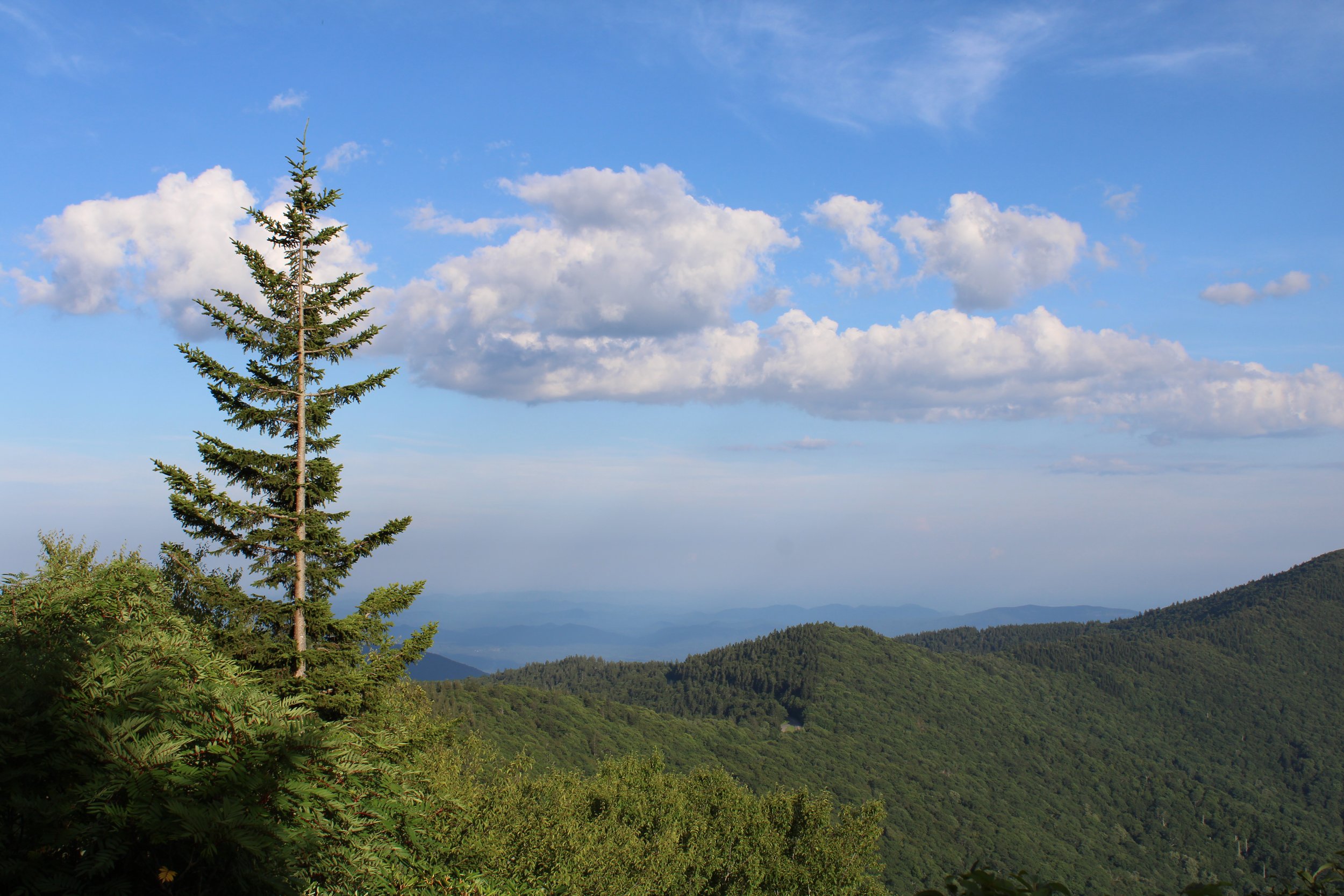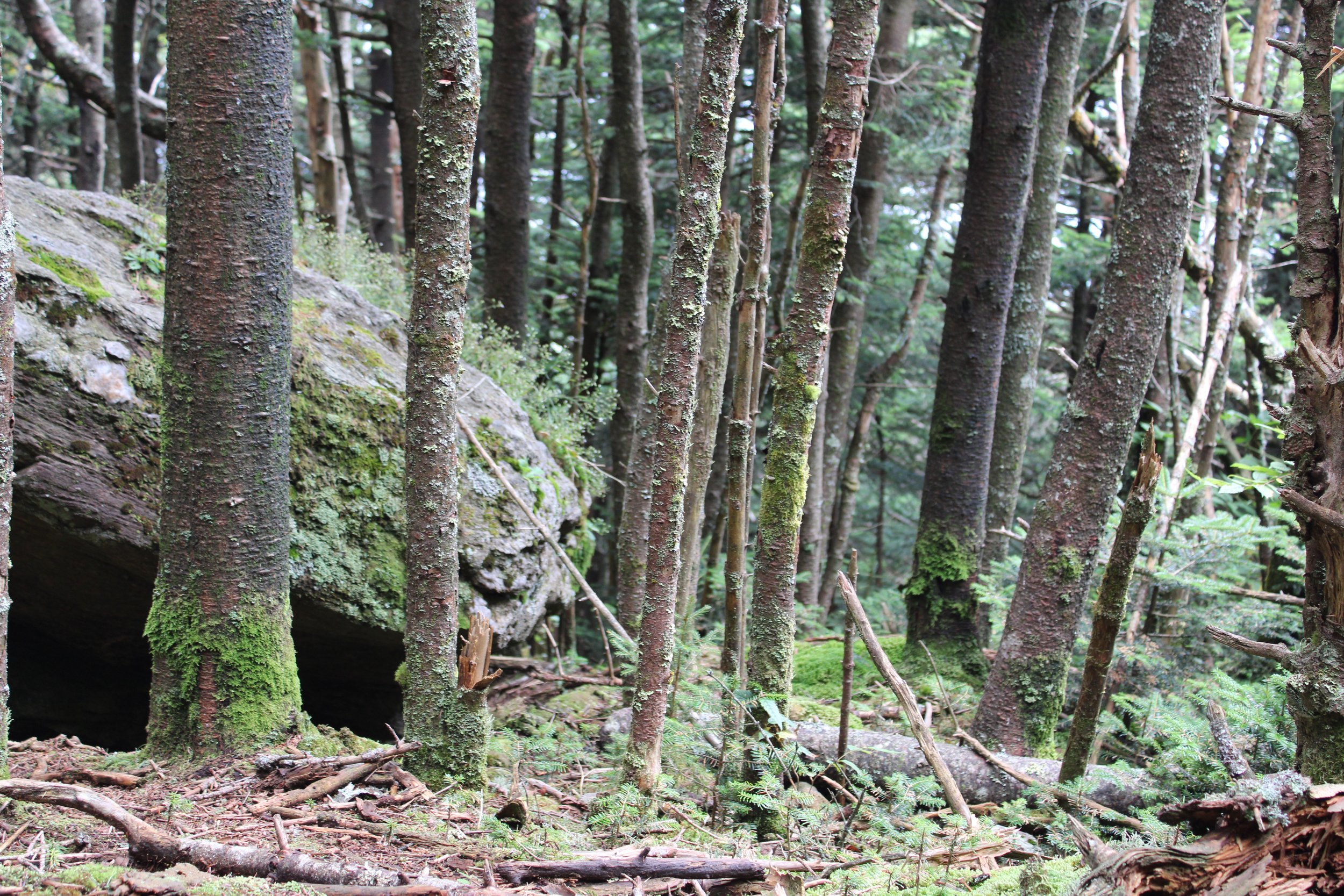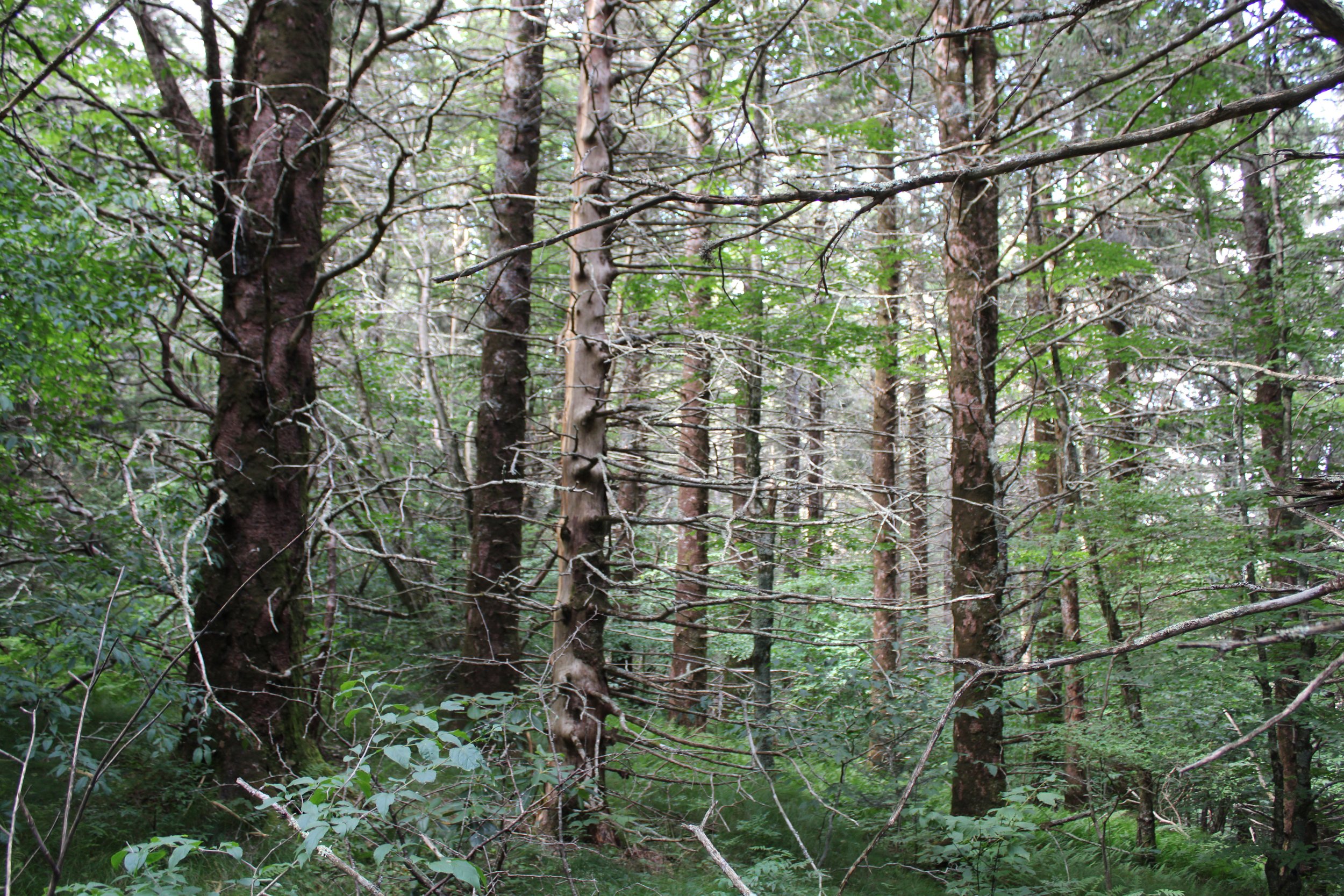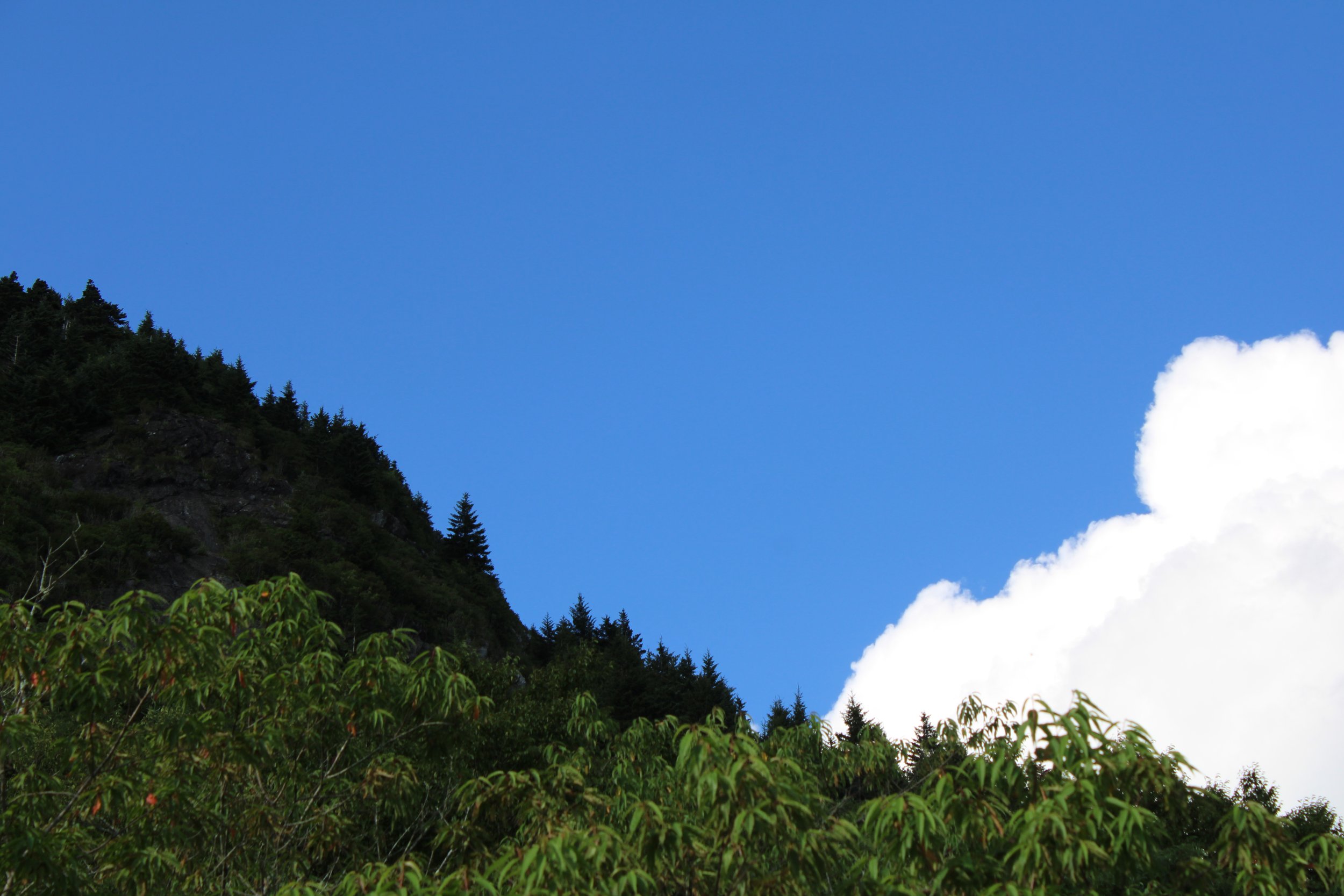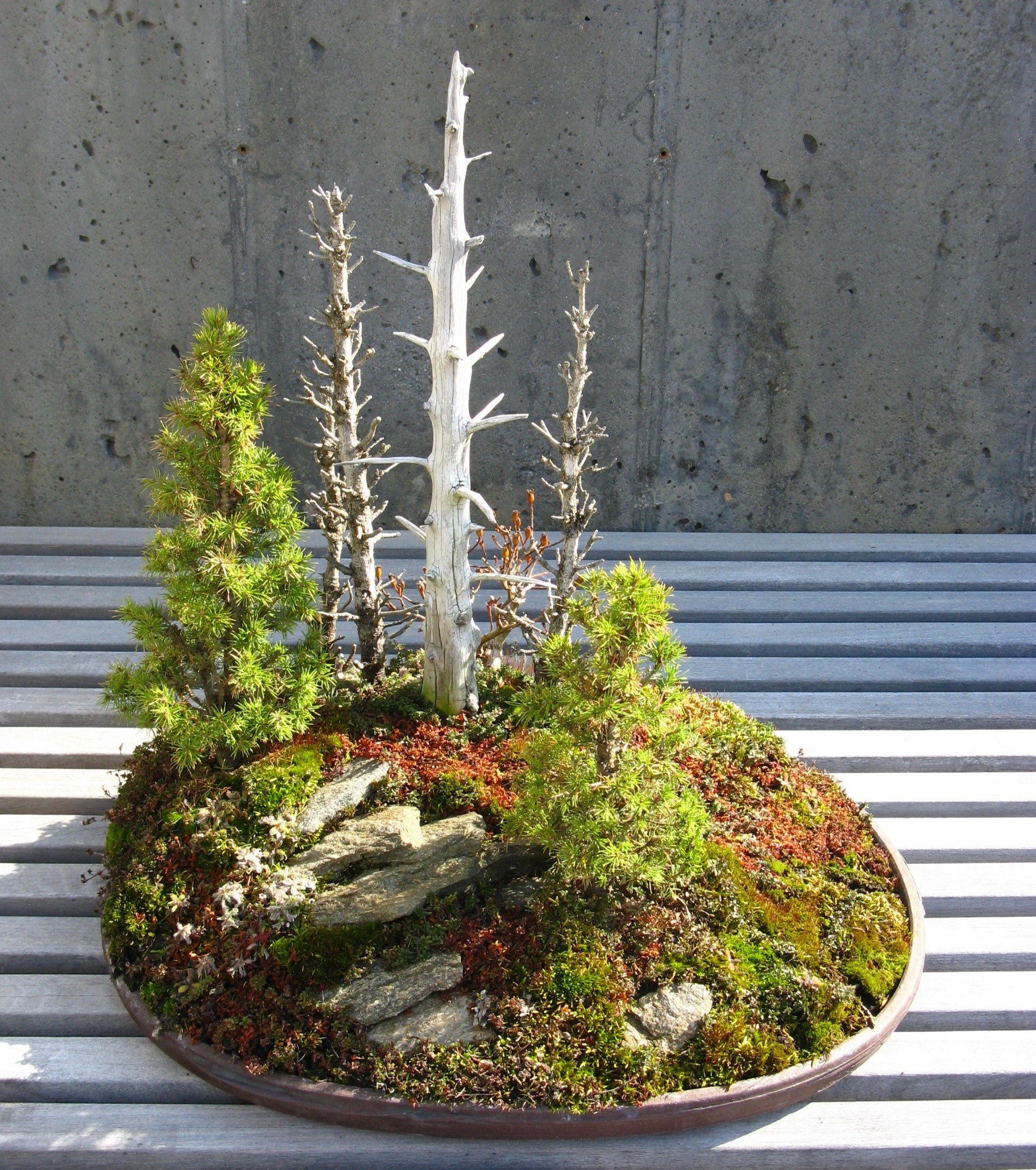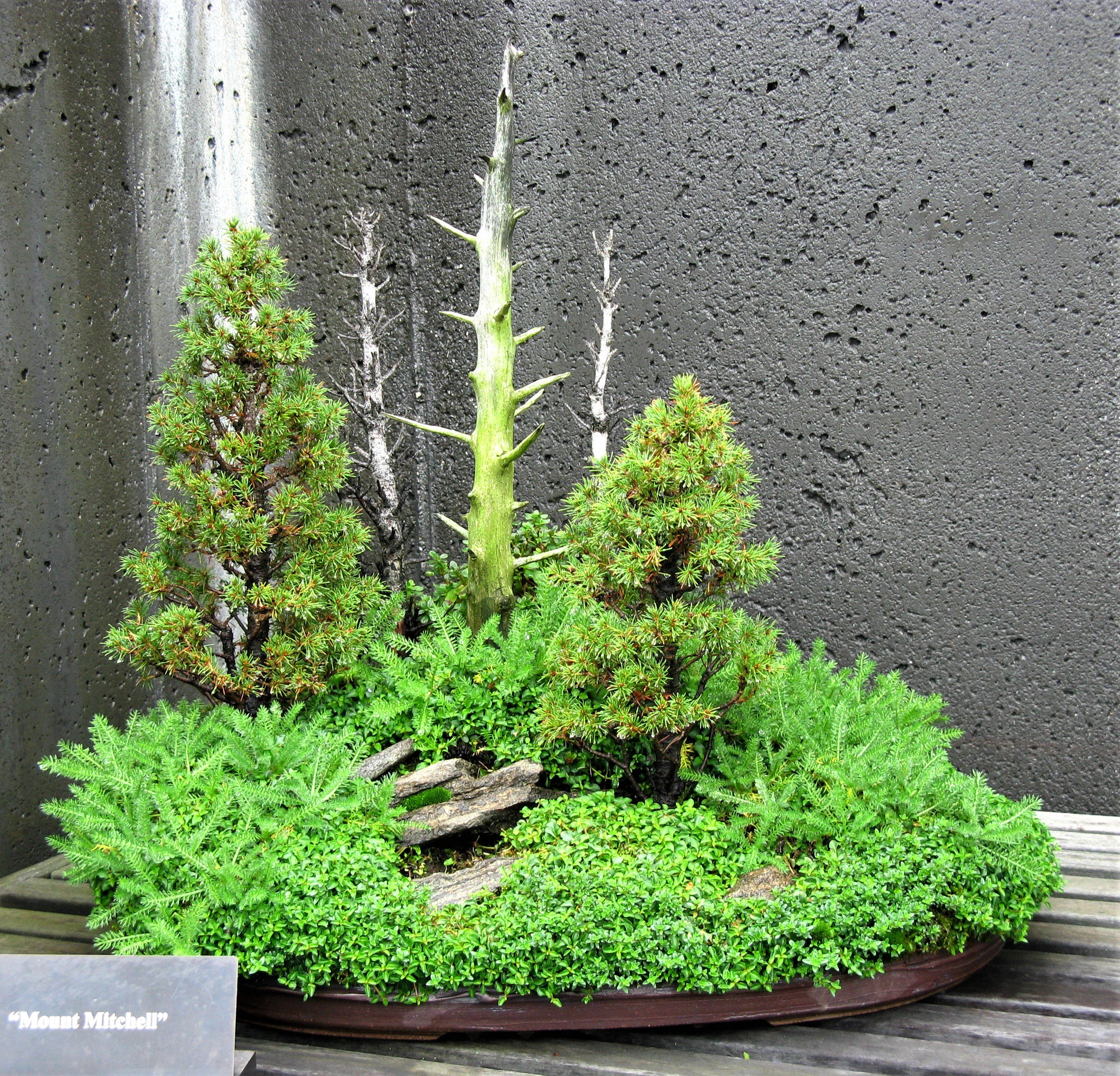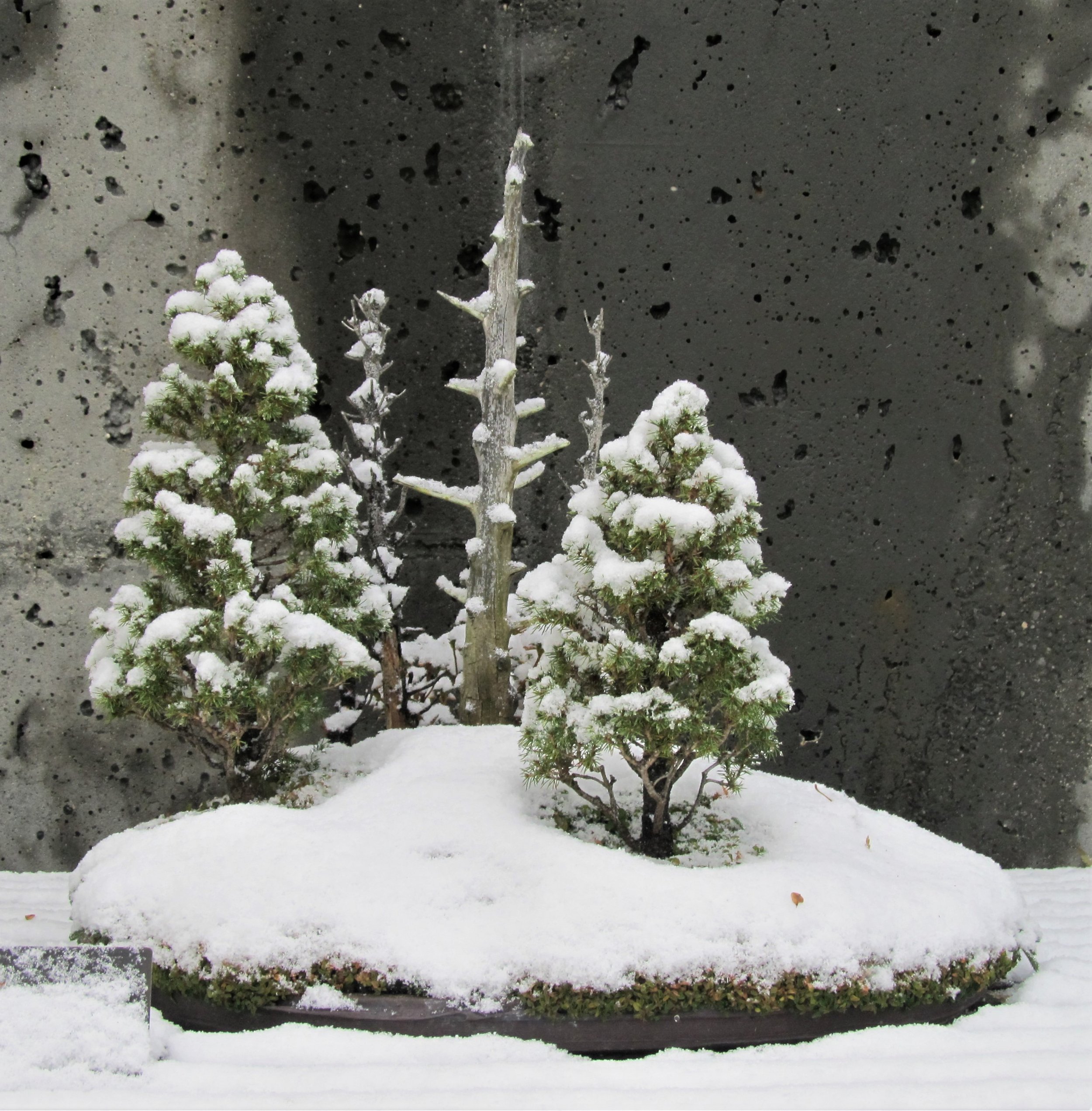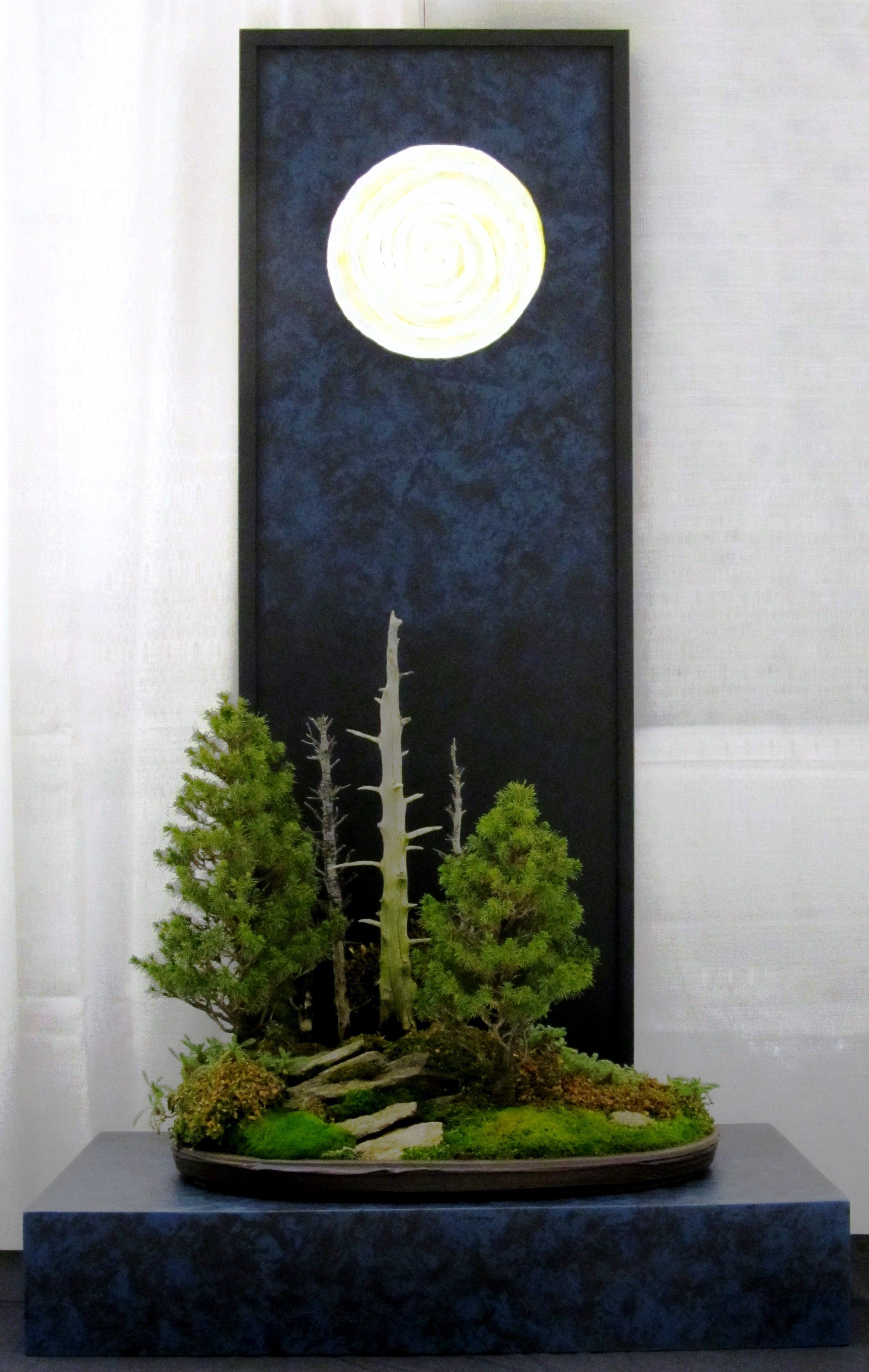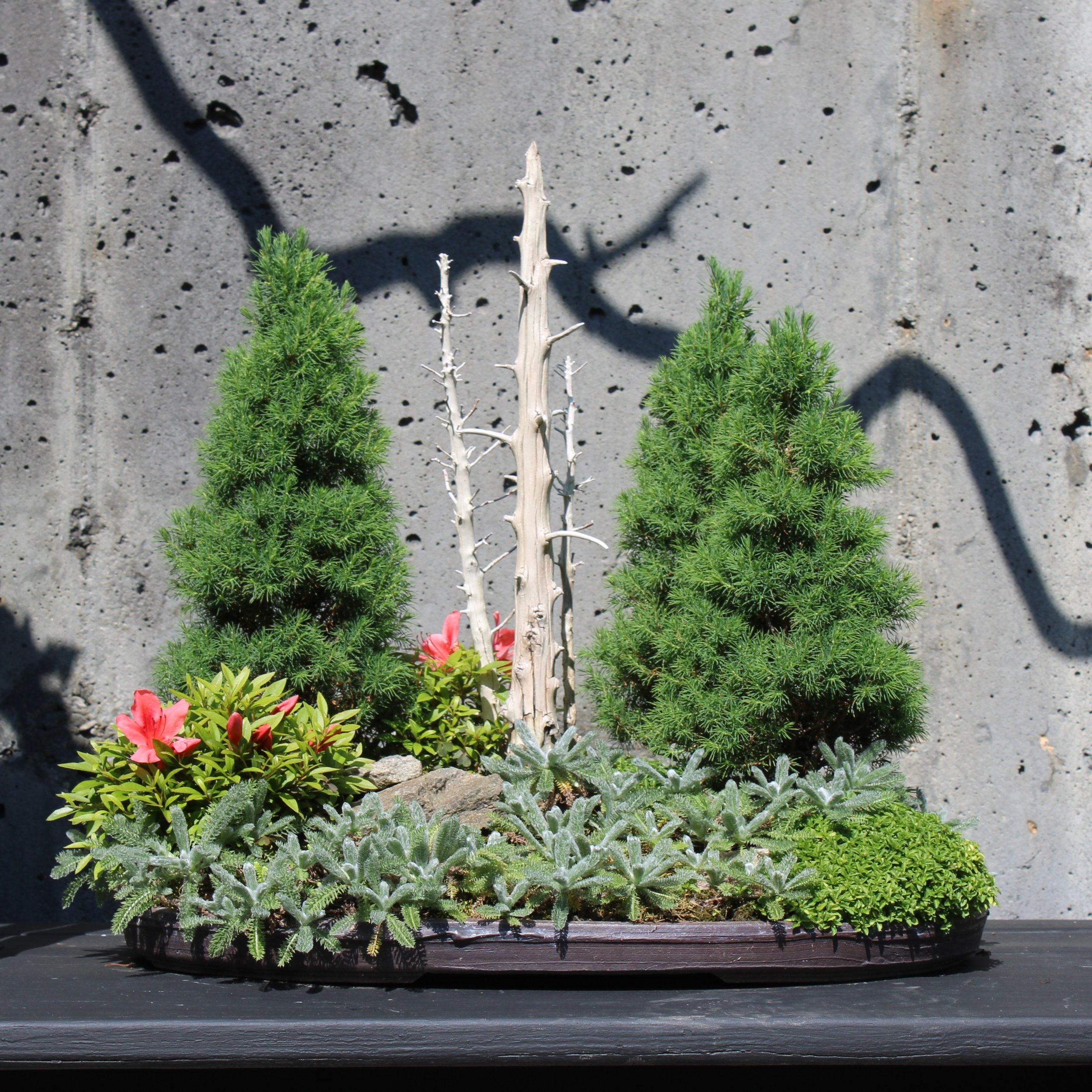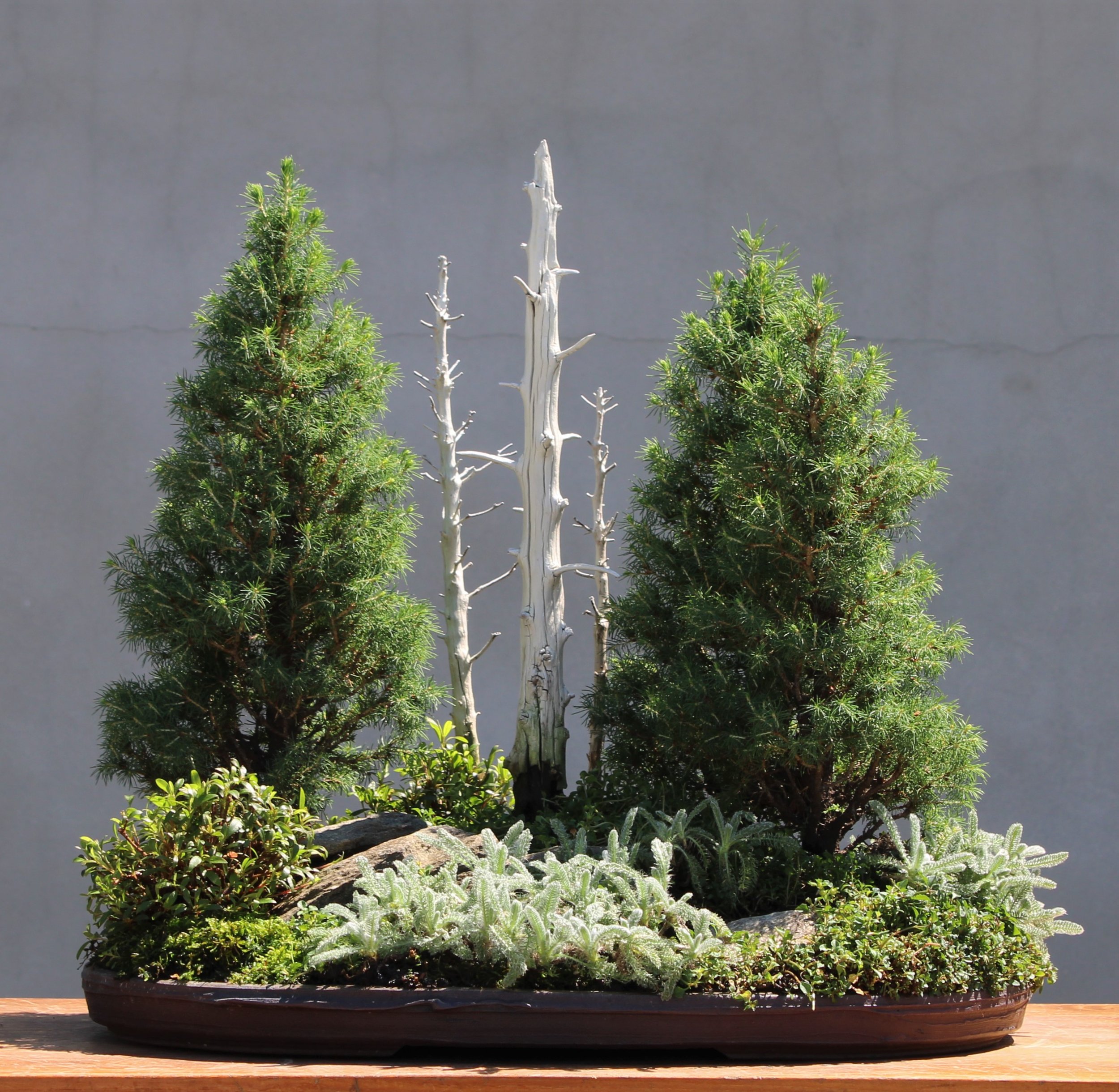Attakulla
One of the Arboretum's most well-known bonsai is a tray landscape depicting a scene from Mount Mitchell. A popular tourist attraction off the Blue Ridge Parkway in western North Carolina, Mount Mitchell is the highest peak east of the Mississippi River, rising 6,684 feet above sea level. Being the tallest mountain in the eastern United States is a distinction diminished somewhat by the fact that all the really big mountains in our country are west of the Mississippi. Still, Mount Mitchell stands out in our region and to get to the nearest taller mountain requires traveling all the way to the Black Hills in South Dakota.
To visit Mount Mitchell is to enter a unique environment. It looks and feels different up there than it does at lower elevations, and although you can drive all the way up the mountain the place feels remote. The forest that covers the uppermost part of Mount Mitchell is mostly evergreen, primarily consisting of Fraser fir (Abies fraseri) and red spruce (Picea rubens), tree species that naturally occur only in the highest elevations of the Southern Appalachian Mountains. Up above 5,500 feet the temperature is noticeably cooler and rain is more abundant, providing the conditions needed for the spruce and fir to survive. The resulting environment is shady and moist, with mushrooms emerging from the forest floor and salamanders secreted under rocks along the margins of trickling streams. The cooler weather and the evergreen forest both contribute to a sensation when you visit Mount Mitchell that you are no longer in the South.
The ecosystem of the highest Southern Appalachian peaks is rare and fragile, and unfortunately there is trouble on the mountain tops. While taking in the scenic vista, visitors to Mount Mitchell will sooner or later recognize that there are countless dead trees, standing out stark and white against the dark green foliage of their surviving neighbors. Many of the big old Fraser firs have succumbed to the balsam wooly adelgid, an exotic pest that should not be confused with the hemlock wooly adelgid ravaging eastern hemlocks in lower elevations. Both bugs suck the life out of their hosts, however, and the resulting dead trees all look pretty much alike. The spruce trees are not bothered by the adelgid, but spruces have their own problems. They are thinning out, losing much of their older foliage, and with it much of their vitality. Research indicates that air pollution is a prime component of the unhealthy paradigm affecting the Southern Appalachian highlands. The pollution blows in from many miles away and the acidity of it changes the pH of the fog that often covers the high mountaintops, bathing the trees. The rain is also acidified and ultimately affects the pH of the soil in which the trees have their roots. The acidity of soil affects the ability of plants to take up nutrients, and that weakens trees and makes them more susceptible to insects and disease.
All of the above is prelude to an explanation of why we have a tray landscape depicting Mount Mitchell, and why that bonsai looks the way it does.
The bonsai collection of The North Carolina Arboretum features an unusually high percentage of tray landscapes, compared with other public collections. There are two reasons why this is so. First, good tray landscapes can be made of younger plant material. Starting out in the bonsai game the Arboretum didn't have many older specimens, so it made sense to get more out of our younger plants by grouping them together into scenes. A second reason we favor tray landscapes in our collection is because the public seems to like them a great deal. I like them, too. Most tray landscapes depict generic scenes from nature, but the possibility exists to have them represent more specific, real-life places. The challenge in doing this is finding a key feature of a given place that can be worked into the design of a tray landscape, suggesting the identity of the place being represented. This is not so easy. Think about a distinctive natural area you like and then try to come up with a way you might signify the essence of that area in a depiction of it. Then consider the limitations of doing the same when working with living plants in a miniature format.
Mount Mitchell is a special place and it's practically in Asheville's backyard. I wanted to do a tray landscape representing Mount Mitchell as a way of celebrating the unique nature of our region, connecting bonsai specifically to this place in the world. What could I use to signify that the scene being presented was meant to be Mount Mitchell? Most visitors to Mount Mitchell are there for the view, and it's a great view, but that isn't something that can be translated to a bonsai treatment. I could have constructed a miniature replica of the observation platform that sits atop the summit, the one all the tourists drive up the mountain to stand on and take pictures of the grand vista, but that would have been straying off the bonsai path. It would have been too literal, too much like modeling, and that isn't the intention with bonsai. Including an observation platform would also have placed emphasis on a human-made feature imposed on Mount Mitchell, instead of focusing on the mountain's natural character. At some point it occurred to me that the dead trees amongst the living were an identifying feature that would be workable. The dead trees could be used as a signifying element for a tray landscape representing Mount Mitchell.
It happened that I had the perfect miniature dead tree on hand. One of the pieces received in the original donation that started our bonsai collection was a tray landscape, not so well done, with rangy junipers, big rocks and a tiny suspension bridge. It also had a dead tree in it, and it seemed to me the dead tree was intentional and not an unfortunate development that occurred after planting. The tray landscape idea was appealing, and the use of the dead tree was an intriguing device I had never seen before. But the landscape was not good enough to keep so it was taken apart, and I stored the dead tree away with the idea that someday it might prove useful.
That day arrived in early 1996, when I traveled to Columbia, South Carolina, to present a program to the Bonsai Club of South Carolina. I had decided to do a tray landscape featuring three dwarf spruce trees (Picea glauca ‘Jean’s Dilly’), some rocks and a miniature dead tree. I called the planting Mount Mitchell because I was familiar with that place and thought it special. For what it is, the planting could just as well be said to represent Waterrock Knob, or Mount Le Conte, or Mount Rogers. They are all well-known, high-elevation sites in the Southern Appalachian mountains facing the same environmental problems, with the same dead trees throughout their spruce-fir forests. Mount Mitchell is the biggest of them all, though, and the one I had seen the most.
The Mount Mitchell planting is small and fairly simple, but it has changed substantially over the years since it was first put together. One reason for occasional alteration is that the spruce trees grow and eventually get too big for the scale of the composition. Changing out those trees has led to some tinkering with their number and placement. This is best described visually, and fortunately Mount Mitchell has been extensively photo-documented throughout the years.
The earliest photographs of Mount Mitchell are from 1999 and 2002. These show the original design of the landscape, with three dwarf spruce and one dead tree (click either image for full view):
From its earliest days Mount Mitchell has been popular and so has been almost constantly on display. Here it is featured in the Arboretum’s exhibit at the 2003 Carolina Bonsai Expo (click either image for full view):
In 2006, ten years after being first assembled, the original composition was changed when the spruce trees became too big for the scale of the planting. Two new spruce were purchased and the three original spruce trees were used to make new dead trees. The arrangement was also replanted into a new container by Sara Rayner:
2006
By 2009 the composition had been changed again. The two living trees stayed in the same position and filled out agreeably. The four dead trees had been reconfigured and a dwarf azalea (Rhododendron cv.) was added at the back of the planting (click either image for full view):
The following images are also from 2009 and show the planting with two different springtime looks (click on either image for larger view):
For the next nine years the Mount Mitchell tray landscape stayed in the same configuration, but kept changing in appearance as the plants gradually grew bigger (click on any image for larger view):
In 2014 Mount Mitchell was featured in the Arboretum’s display at The Winter Silhouette Expo in Kannapolis, North Carolina:
2014
By 2019 the spruce trees had once more attained a size that was disproportionate to the scale of the planting. It was time to hit the reset button again (click on either image for full view):
In the new configuration the number of living trees was increased from two to three. The dead trees were reduced from four to three when one of them became so decrepit that it fell apart when handled. Although the dead trees are treated with chemicals to prolong their existence, nothing stops rot in the end. A second dwarf azalea was also added on the far left side of the planting.
In recent years Mount Mitchell has continued its evolution (click on any image for full view):
This image from 2022 evokes the somber feeling that can be experienced among the conifers on the high peaks of the Southern Appalachians:
Recently the Mount Mitchell tray landscape received a thorough pruning. The following images show before and after (click either image for full view):
The spruce trees have gotten large again. It can be anticipated that Mount Mitchell will undergo another reconstruction in the near future!
The big mountain has been here a long time. The name it is known by now honors the man who verified the height of it, thus determining that this particular mountain is the largest one east of the big river called Mississippi. Prior to that the mountain was called by another name, given to it by settlers. These newcomers called the big mountain "Black Dome," describing its physical appearance when seen from a distance. But before the settlers came the land was not empty. Other people lived in this place and called it home from time immemorial, and of course they knew the big mountain. They knew its spirit and respected its power. The Cherokee called the big mountain "Attakulla."










